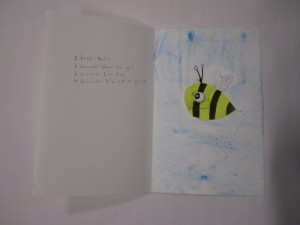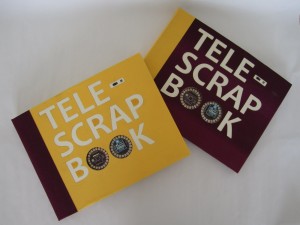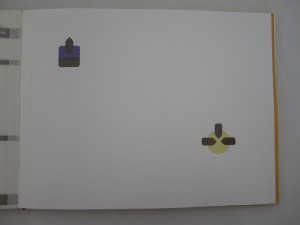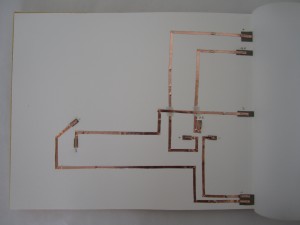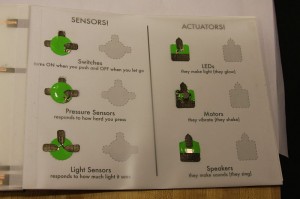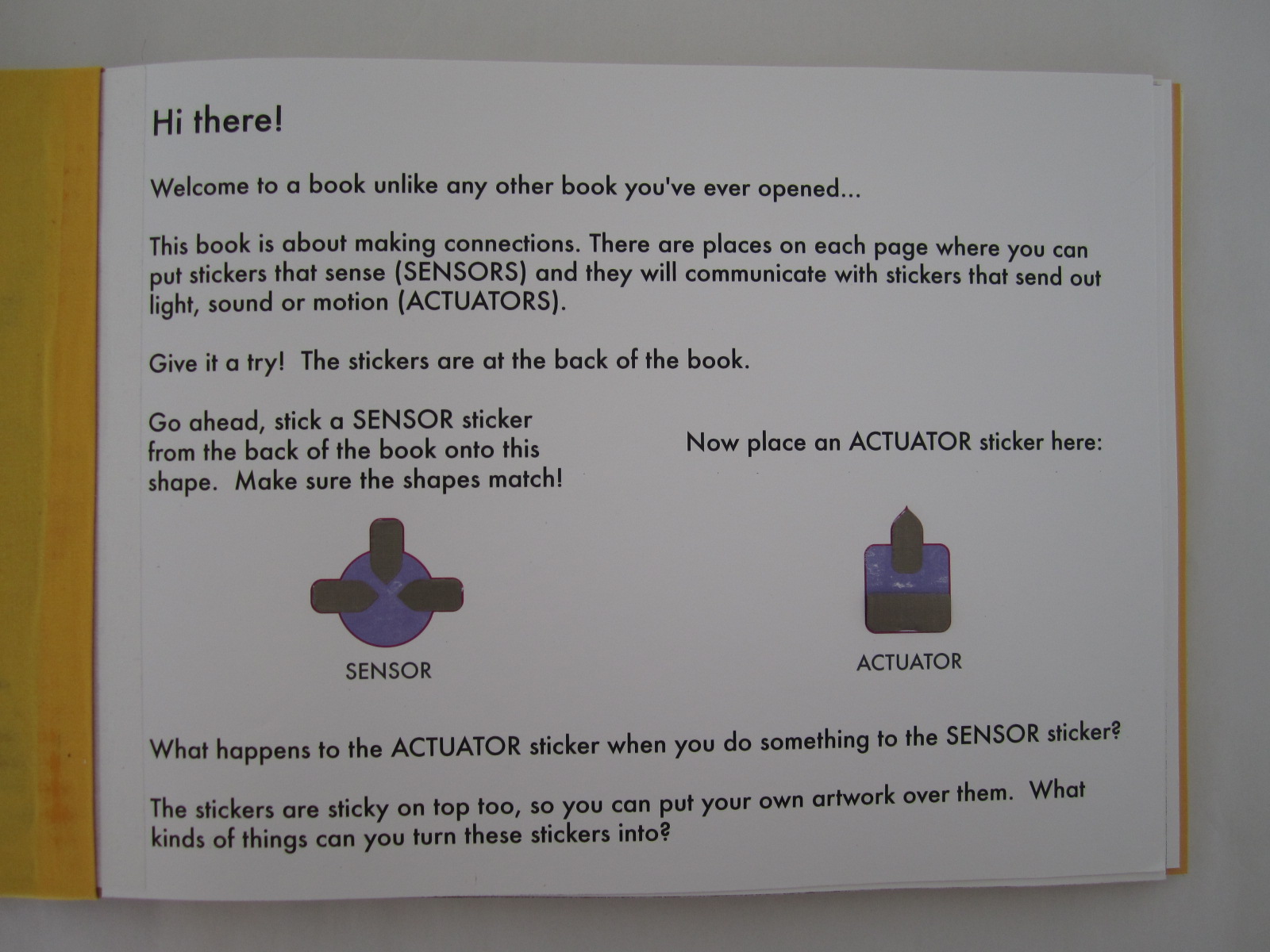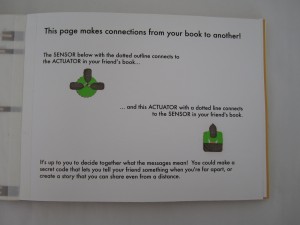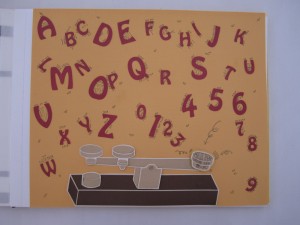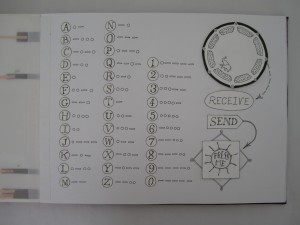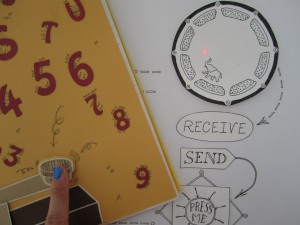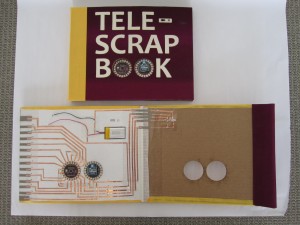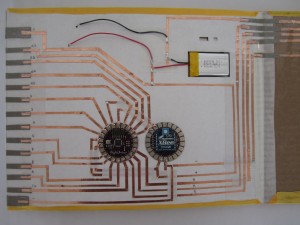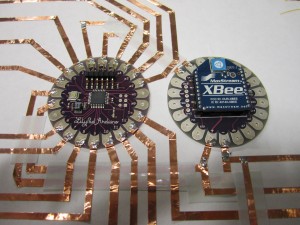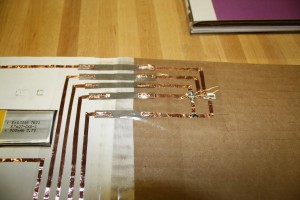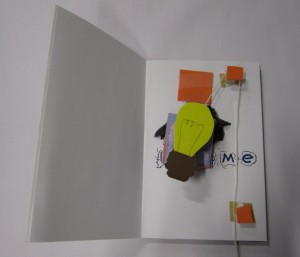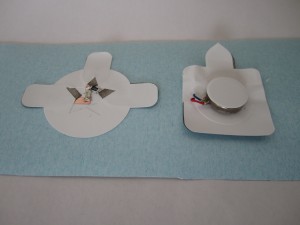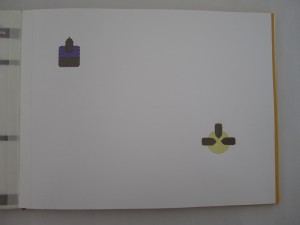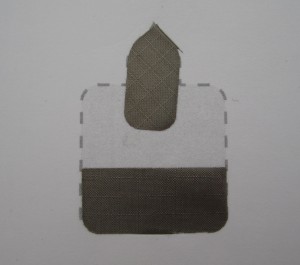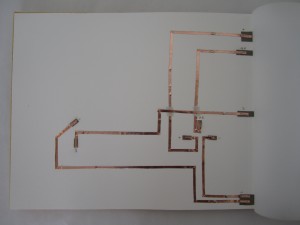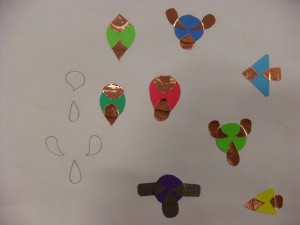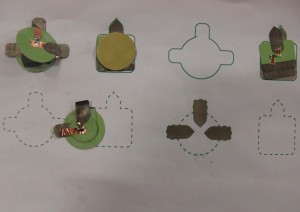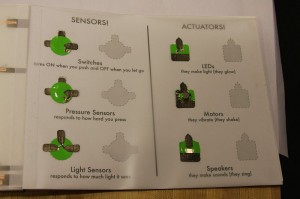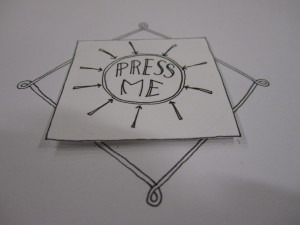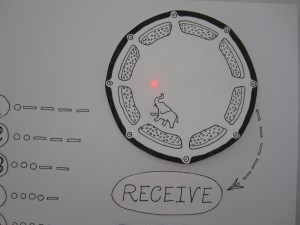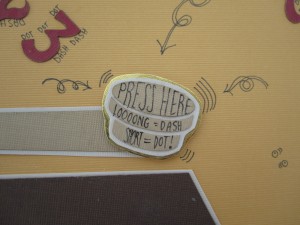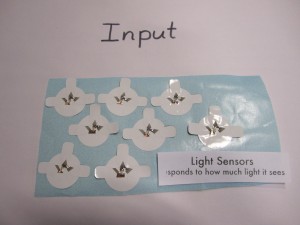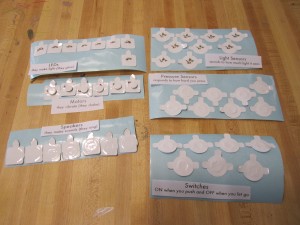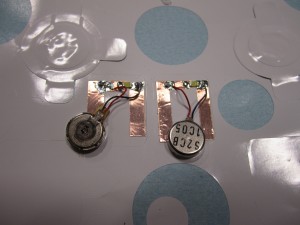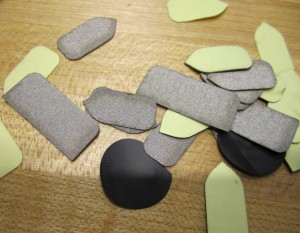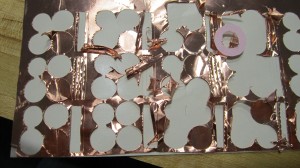Team: Natalie Freed, Jie Qi, Adam Setapen
The Telescrapbooks are remote-communicating electronic sticker books. They are constructed to look and feel as much as possible like traditional books, and to be completely customizable and craft-able. The idea is for people to be able to design a personalized remote communication tool for themselves and someone they care about.
This project combines Communicreate, my first pass at a “remote communication construction kit,” and Jie Qi and Ed Baafi’s idea of electronic stickers. Jie and I brainstormed ways to fix the form factor problems, and decided to make the construction method sticker and papercraft — something familiar and easy, but also leaving tons of room for creativity. Adam joined us with ideas and mad coding skills, and together we made the Telescrapbooks and IOStickers.
Technologies: LilyPad Arduino, Xbee, paper electronics
Publications: Sticking Together: Handcrafting Personalized Communication Interfaces. IDC 2011. (pdf)
Each page has a sensor sticker footprint and an actuator footprint. These are connected via traces on the back of the page to a microcontroller.
The back of the book has a page of IOStickers, electronic sensor and actuator stickers. These stickers can be placed on the footprints on the book pages.
To teach the concept, the book opens with a local connection page.
The pages following actually send and receive values from the other book. So when you affect a sensor on one page, the actuator on the corresponding page in the other book will activate. Currently the communication is limited to the range of the Xbee radios, but our next step is to make the books go through a computer or phone so they can be connected at any distance.
Here’s a page we decorated, covering the stickers. Jie made the white one and I made the messy one!
Here are some more pictures of the electronics.
So that we could let more people make their own pages, we designed Telepostcards, the greeting-card version. The cards have circuitry that goes from the sticker footprints to magnets on the back that snap onto a removable board containing all the communicating electronics.
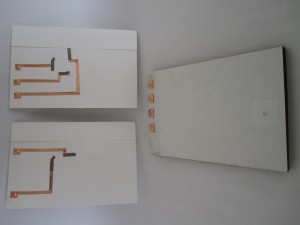
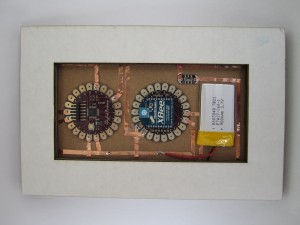
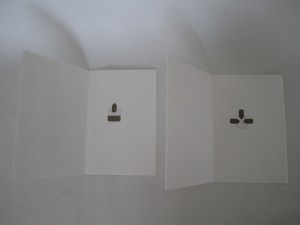
Here are a few of the cards our user test participants made.
